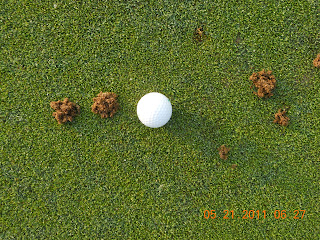Purdue Turf &
Landscape Field Day
Tuesday, July 9, 2013
W.H. Daniel Turf Center, West
Lafayette
PREREGISTRATION DEADLINE:
Friday, June 28
Register on-line, US mail, fax or
call.
- Free Attendance for
one person with new MRTF membership
-
Up to 4.0 category 3a/3b/RT CCHs, 3.0 category 6
CCHs, 2.0 category 2 CCHs and 1.0 category 7a CCHs requested.
- GCSAA PDU’s requested
- Lodging available at Hilton Garden Inn,
765-743-2100, for $99 (single/double) until June 24. Mention Group Code: MRTF
to get the reduced rate. Address: 356 E State Street; West Lafayette, IN 47906
We look forward to seeing you this year at the Purdue Turf
Field Day! If you have any questions please contact Jennifer Biehl at
765-494-8039 or biehlj@purdue.edu
Morning
Schedule
8:00
am
Registration
8:00
- 9:00 Tradeshow & Equipment
Demonstration
9:00 -
9:20 Opening Remarks and
Recognition of the MRTF Award of Achievement winners:
Mr. Ryan Baldwin, Highland Golf and Country Club;
Purdue Imprelis Response Team
9:30 - 11:30 Research tours :(2.0 cat.
2/3a/3b/RT CCHs, 1.0 cat. 6/7a CCH requested)
Lawn & Sports
Tour
|
Where the rubber
meets the road, Fred Whitford
|
Fertilizing turf
with nitrogen: when and what should I apply, Cale Bigelow
|
Tough to identify
weeds , Aaron Patton
|
State Chemist,
what have we seen in 2013?, Joe Becovitz
|
Understanding
billbug biology and control, Doug Richmond
|
Durable
dandelions: biology and control, Dan Weisenberger
|
Selecting species
and mowing strategies to reduce your mowing needs - Quincy Law
|
Golf Tour
|
Where the rubber
meets the road, Fred Whitford
|
Fertilizing turf
with nitrogen: when and what should I apply, Cale Bigelow
|
Tough to identify
weeds , Aaron Patton
|
Fungicides,
disease control, and putting green quality, Rick Latin
|
Understanding
billbug biology and control, Doug Richmond
|
Turf and organic
matter: a love/hate relationship, Jon Trappe
|
Selecting species
and mowing strategies to reduce your mowing needs - Quincy Law
|
Landscape Tour
- NEW!
|
Variegation or
virus? (Diagnosing virus diseases on ornamentals), Gail Ruhl
|
Out of sight, out
of mind (Hidden diseases of trees and shrubs), Tom Creswell
|
Quick and dirty
tree assessment, Lindsey Purcell
|
Decoding conifers,
Rosie Lerner
|
Cheap and deep:
Proper planting depth=long term success, Kyle Daniel
|
Responding to this
year’s pests without causing bigger problems, Cliff Sadof
|
How to best manage
YOUR emerald ash borer situation, Adam Witte
|
Afternoon Schedule
11:30 - 3:00 Trade Show & Equipment
Demonstration
12:00 - 1:00 Pork Chop Lunch
by Shoup’s Catering
1:00
- 3:00 Afternoon
Workshops
Calibrating
ride-on sprayers (meet in classroom) Cat. , 3b, 6, RT CCHs –Aaron Patton
1:00
- 3:00 Afternoon Research
Tour
Crabgrass
control research update (meet on north putting green) Cat. 3b, 6, RT CCHs – Dan
Weisenberger and Quincy Law
Cultivar
evaluation trials: See the newest cultivars of Kentucky bluegrass, perennial
ryegrass and tall fescue Cat. 3b, RT CCHs - Cale Bigelow
1:00
- 3:00 Afternoon
Landscape Tour
Tour
of horticulture gardens on Purdue Campus: Plant selection and culture Cat. 3a
CChs - Kyle Daniel





































